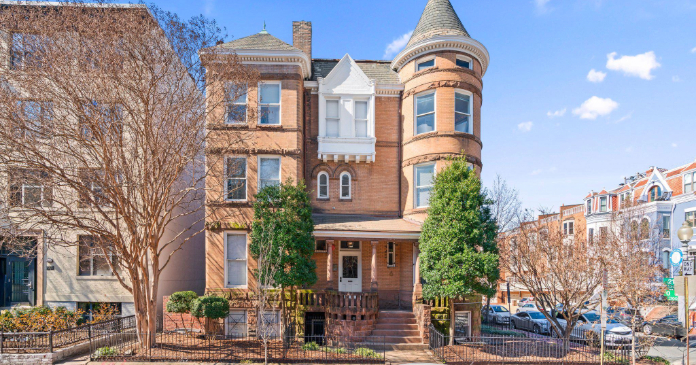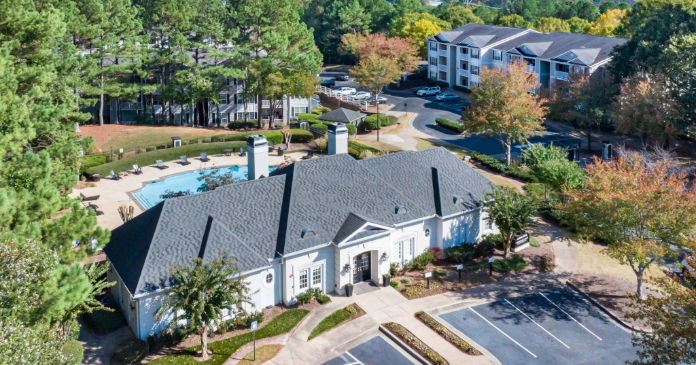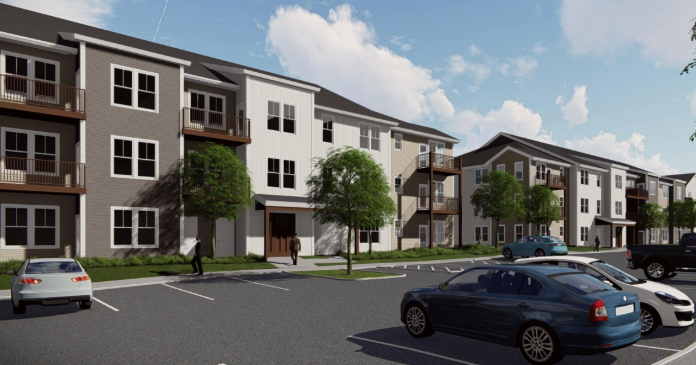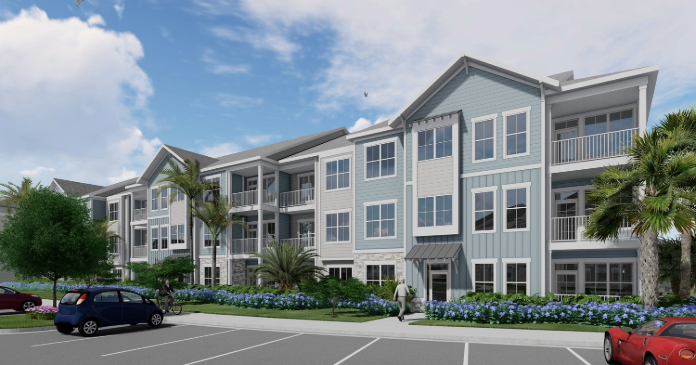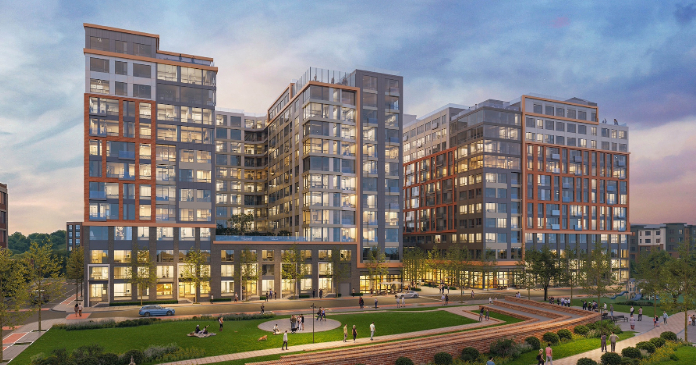The fund closed in February 2006 with $455 million of equity and an investment capacity of $1.3 billion on a leveraged basis and has around $45 million of equity remaining that Waterton expects to deploy by the end of the year. Fund IX is Waterton’s third with CalSTRS, and the partners are putting together yet another, with plans to start deployment in January, although the size of Fund X hasn’t been determined.
Waterton was founded in 1995 to acquire multifamily and commercial properties for repositioning by former Equity Residential executive David R. Schwartz and former AMLI Residential Property Trust and Berkshire Realty Capital executive Peter M. Vilim, who met each other while working at AMLI in the 1980s. Since then, the company has invested more than $2 billion of total capital in value-added real estate investments with institutional partners like CalSTRS.
The Chicago-based firm doesn’t specifically target high-rise apartments or failed condo conversions and has acquired garden-style apartments in markets throughout the country.
But, when Waterton decided the time was right to go urban, it did so in a big way, buying four high-rise apartment assets in the past 17 months.
The 23-story, 399-unit River Park North and the 306-unit One East Delaware in Chicago and the 26-story, 250-unit Symphony Place in Minneapolis were purchased from Archstone-Smith, as the REIT continued its planned exit from Midwest markets shortly before management accepted a buy-out offer from Tishman Speyer. The Symphony Place transaction represents Waterton’s entry into the Minneapolis market.
The company’s most recent high-rise acquisition closed in April, when Waterton paid $475 million for the 2,346-unit Presidential Towers, which consists of four 50-story apartment towers, a five-story parking structure with 1,159 parking spaces and around 100,000 sq. ft. of retail space on 5.8 acres in Chicago’s West Loop. The seller was the Pritzker family.
Waterton paid a total of $663 million for the four assets and plans to push rents, by 10 percent after renovating unit interiors. Current rents average between $1,300 and $1,500, with One East Delaware being the most expensive. “The bones on these buildings are great. They just need to be brought up to more current times,” said Waterton Senior Vice President Mark Stern, who handles the company’s acquisitions in the Western U.S. and Chicago. Three of the properties include ground-level retail space.
Presidential Towers is the only one of the four in need of any structural upgrades. “When it was built in the mid-1980s, the neighborhood was developing. Today, it’s more established, so we need to open up the retail and make it more street friendly,” said Stern.
The neighborhood had been a skid row until the late 1960s, when a six- block area was designated for urban renewal. During the ten years prior to the ground-breaking for Presidential Towers, many of the businesses and the single-room occupancy (SRO) hotels there were razed, leaving behind a blighted wasteland dotted with whatever SROs remained.
The Towers was the scheme of three politically connected developers, who, thanks to close ties to city hall, received massive public subsidies for the $233 million project that was designed as a self- contained village across two blocks and sealed from the outside with only one entrance to each building and a guard at every door. When the Wall Street Journal wrote about the Presidential Towers in 1986, they dubbed it Yuppie Heaven.
In 1980, the developers acquired the site from the city for $30 per sq. ft, exactly what the city paid for the land in 1968. The project also received tax-exempt financing from the city and the federal government. “It was built with a HUD loan, but never actually had an affordable component to it,” said Stern.
With the help of House Ways and Means Committee Chairman Dan Rostenkowski, the developers were able to grandfather in their project and skirt the requirements of the 1980 Ullman Amendment, which makes it mandatory housing developments financed with tax- exempt bonds to set aside 20 percent of their units for low- and moderate-income families. Never mind that financing for Presidential Towers wasn’t even completed until 1983. Rostenkowski would go on to spend 15 months in a minimum security prison after pleading guilty to two counts of mail fraud in 1996.
But, despite its favorable financing, the Tower’s prominence in the press ultimately led to its downfall. Leagues of protesting former area residents and advocates for the homeless and affordable housing drew the attention of the media and discouraged potential renters. From 1986 through the early 1990s, while the rental market softened, demonstrations escalated. Vacancies soared. The developers were in default on their $159 million FHA mortgage payment by 1990, but recapitalized and brought in Pritzker five years later. “It was one of the largest HUD defaults ever,” said Stern.
When Pritzker brought Presidential Towers to market last December, it provoked a red-hot bidding war that ended when Waterton beat out more than 20 competitors. The deal was financed in April with a $325 million long-term, interest-only loan from Bank of America at a 5.4 percent interest rate, a loan Stern says he would be unable to replicate today given current interest rates and the shake-up in the capital markets. “I wouldn’t have been able to get a conduit loan. Freddie Mac and Fannie Mae probably would have looked at it, but the interest rate, the spreads, they are higher now. We got lucky. Sometimes it’s better to be lucky than good,” he said, adding that Waterton was able to close the high-profile deal in six weeks.
According to Securities and Exchange Commission filings in July by Bank of America, which was re-selling the loan on the commercial mortgage-backed securities market, the capitalization rate based on 12-month trailing net operating income (NOI) of $17.4 million (during the 12 months ending January 31) was 3.67 percent. But the price Waterton paid still is less than it would cost to build the trophy asset today. Moreover, rents are rising in Chicago’s downtown at a pace not seen since 2001, with asking rents expected to jump 4.7 percent this year, according to Marcus & Millichap.
Based on projected rent increases, NOI at the property is expected to increase 38 percent in the next 18 months. Coupled with rent hikes on upgraded units, those projected gains should help Waterton realize its targeted internal rate of return in the low teens. Stern plans to renovate the retail and 50 percent of the units, as they become vacant, over Waterton’s typical five-year hold period for its value- added apartments.
Rick Wise, Waterton senior vice president of acquisitions for the company on the East Coast, is looking in a number of markets for fractured condo deals that make sense as apartments. He found two in the nation’s capital. Waterton closed on the 18-year-old, 316-unit Bellemeade Farms in Leesburg, Va., in June and followed almost three months later with acquisition of 314 of the 360 units at the 12-year- old Ridgeleigh at Van Dorn in Alexandria, Va., about a half mile from the Van Dorn metro station. A number of the units in both assets had been sold as condos and occupancies hovered around 60 percent.
Waterton acquired Bellemeade Farms for $47.5 million, or $150,316 per unit, from Com-stock Homebuilding Cos., which bought the community from Fairfield Residential in 2005 and began to renovate and sell units. “It was a decent time to get into the conversion game, but by the time they got their capital program going and their conversion papers filed, it was a bit late. Fifty-eight units were sold by Comstock and we acquired all of them prior to closing,” said Wise, who plans to spend about $3 million correcting deferred maintenance and renovating interiors before increasing current rents of around $1.50 per sq. ft. by $100 to $150.
“This was a mixed bag in terms of what we were getting. The majority of the property was unrenovated and a percentage of the units were upgraded to condo specs but not sold, and another percentage of the units were gutted. We had to put them back on line after closing, before we could rent them out,” Wise said. The Leesburg sub-market is on the western end of the Dulles Toll Road Corridor and will benefit as that corridor expands. “Loudoun County is one of the fastest growing counties and has one of the highest median incomes in the country,” he said.
Waterton purchased Ridgeleigh at Van Dorn out of foreclosure from Fremont Investment and Loan. The property was built by JPI as a rental in the mid-1990s and acquired by Washington Communities for conversion to condos in 2006. When the bank foreclosed, 46 units had been converted to owners and sold. Waterton bought the remaining 314 for $70.5 million, or $224,522 per unit.
“We bought Ridgeleigh because we were able to acquire enough units to effectively control the operations of the property and the homeowners association. And, that’s obviously something that’s very important to us,” said Wise. The community is located in Fairfax County, another of the District’s affluent high-growth sub-markets. Wise plans to spend about $3.5 million to renovate the unit interiors and construct a clubhouse, which was gutted during the conversion process and never completed.
“At the end of the day, this property could be reconverted to condos by the next owner, if that market comes back,” he said. Meanwhile, Wise continues to look for condo-to-apartment reversion opportunities in D.C. and other markets that have a lot of busted condo potential, like Central and South Florida and San Diego. But finding them may not be in the cards.
“The key to this busted condo distressed strategy is, every deal you look at has to stand on its own. People ask me all the time how many more I’m going to do and what markets I’m targeting. But the fact of the matter is, there are so many elements and variables that go into this that even though we’d like to do more, the right opportunity may never come along,” said Wise, explaining that those variables include how many units have been sold, the position the county takes on real estate taxes and whether they plan to assess the property as condos or apartments, the physical condition of the asset and how the by- laws read in the condo documents.
“We went into both of these deals (Bellemeade and Ridgeleigh) as an experiment and we said, ‘Let’s see if we can figure it out.’ It was a way to get our arms around it and see if there was a market here. I won’t say we made a market, but it was an experiment and it worked out. We found a way to get these deals done in a way that made sense for us and our investors,” he said.
Wise expects the repositioning program at the two communities to take a couple of years. “We plan to knock out 20 to 30 percent of the units within the next few months. Because so many were vacant, we can take a whole bulk number of them and renovate, then keep renovating as units turn. But, we’re trying to build up an inventory of renovated units so that we always have units to rent,” he said.
The recent turmoil in the capital markets hasn’t dampened demand for value-added plays or the number of deals being offered. “For quality assets in excellent locations, especially ones that attract lower leverage institutional investors, competition is still very much heated in the value-added arena,” said Wise.
“Some buyers are accepting a lower loan-to-value ratio then they typically could get, and prices may have come back because of the financing situation, so sellers who are trying for the big prices and don’t have to sell are saying, ‘Why should I sell today,’ when they’ll take a five- to seven-percent hit to their price. But, if you’re a real seller today, there’s plenty of deals getting done,” added Stern. He and Wise continue to aggressively search for value-added deals on both coasts.




